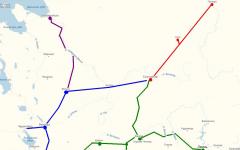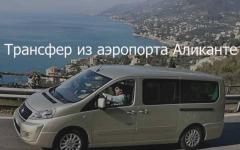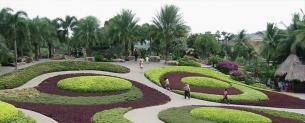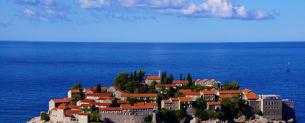China Inner Mongolia Erlian Huoto. How to get cheaply from Ulaanbaatar to Beijing
So, already 36 hours on the road. I left Ulan-Ude by bus for Mongolia yesterday at 7.30 am, in Ulaanbaatar I almost immediately took a train to the Chinese border town of Erlian (Erenhot), from there, after going through all the passport and customs procedures, I took a bus to Jining, and now I’m rolling towards Datong in a seated train carriage. This is short, now about everything in detail and in order.
The bus to UB departed on schedule, there were no signs of trouble, everything went according to plan. I met my classmate on the bus, we haven’t seen each other for a very long time, it was nice to meet and remember our student days. We crossed the Russian border normally, but trouble happened at the Mongolian border. There, at customs, some dude appeared - a Mongol with a bandaged head. No one attached much importance to this, but the bandaged head was remembered. He turned out to be the cause of all our troubles - it turned out that he ran into our bus while we were all going through inspection at the border, planted something (some prohibited things, contraband - I don’t know what exactly) under the back seat and was gone. Everyone crossed the border safely and were about to go further to Altan-Bulag for lunch when the mask show began. Three times all passengers on the bus were forced to get off, once we went through the passport control procedure again, and the drivers wrote an explanatory note twice. As one of the drivers later said, this was the first time in his memory.
Due to a two-hour delay at the border, we arrived in Ulaanbaatar very late, and I was also not sure about the departure time of my train to Erlian - different times were written on various travel websites, and I did not find a normally working website of the Mongolian railway . I caught a taxi as quickly as possible, again got pretty nervous in the Ulaanbaatar traffic jams (the time was 19.45, and according to some sites, the train to Erlian leaves at 20.00), drove to the railway station, got to the ticket office - and breathed a sigh of relief. The Ulaanbaatar – Erlian train departs at 20.45 and arrives in China at 10.25 the next day. A ticket to a compartment carriage costs 70 thousand tugriks. The carriages are clean, the service is good, and you even get free tea and coffee.
About crossing the border. Mongolian border guards enter the train, do not particularly inspect them, just take the passports and give them back with stamps. And in Erlian, China, you just get off the train and go through passport control at the train station. Very quickly - no more than five minutes, and you are already officially on the territory of the People's Republic of China.
Erlian is a city in the development of which the Chinese are investing a lot of money and great hopes. On the other side is the Mongolian Zamyn-Uud, but it’s like a village compared to Erlyan. The Chinese in general are always committed to developing border cities; you don’t have to look far for examples; just compare the development of Manchuria compared to Transbaikal or Heihe compared to Blagoveshchensk. There are also plans to develop tourism in Erlian, and everywhere this city is positioned as the “capital of dinosaurs.” There is a dinosaur museum, and large dinosaur figures can be found in the steppe just outside the city.
I didn't plan to spend the night in Erlian, I wanted to move faster to Datong, but the only bus leaves there early in the morning every day. The train is also daily, but also early in the morning, and the time was already around 11 am. I knew that I could first take a bus to Jining and then take a train to Datong, but I couldn’t find out from passers-by where the bus station was (they don’t speak English and are generally afraid of foreigners).
So, while turning down swooping taxi drivers with offers to take me to Jining for “only” 200 yuan, I ran into Stefan, a traveler from Brussels, Belgium. As it turned out, we arrived on the same train, and he had exactly the same plans - to get to Datong by nightfall. Before this, Stefan lived for more than a month in Mongolia in a family of reindeer herders. The two of us started looking for a bus station and found it half a kilometer from the train station. The most interesting thing is that the person who showed the way to the bus station, escorted Stefan to the ATM, where he withdrew money, and even explained to the cashier that we needed tickets for the next bus to Jining, turned out to be a taxi driver! Absolutely disinterestedly, before this, both Stefan and I rejected his offers to go in his car to Jining. Behavior atypical for taxi drivers. Then it turned out that he managed to talk to the bus driver and tell him that we then need to find a train station in Jining and get tickets to Datong. We found out when we arrived - the bus driver gestured to us at one passenger (a guy about 25 years old) so that we should follow him. It looked a little strange, but Stefan and I still went after this guy. We walked about a kilometer and came to the railway station. He helped us buy tickets to Datong, moreover, he talked with the station employees, and they “watched” us for the hour before the train departed. They “kept guard” in a good sense, they were just watching to make sure we didn’t miss the train. When the time came, another station worker approached us, and almost by the hand he led us past the huge line to board the train, brought us to the right car, and only then calmly left. It was all cute and funny when they passed us from hand to hand like that, while explaining everything only with facial expressions and gestures.
The bus from Erlian to Jining takes five hours, and the train from Jining to Datong takes just over three hours. Late in the evening we found ourselves in the ancient city of Datong. The hostel is located in the very center of Datong, a place in a six-bed room cost 40 yuan.

Stefan and I were the only travelers in this hostel - there were two Chinese people living with us in the room, Jang and Jason, they were almost locals. Jason (he, of course, has a Chinese name, but he said to call him Jason) showed us once again an example of Chinese hospitality and friendliness - he said that the next day he would take us to the Yunnan Caves (the main attraction in the vicinity of Datong) in his car.
During this day, I have already traveled 467 km through the Inner Mongolia Autonomous Region of the People's Republic of China.
Erlianhot, a city in Northern China, in the autonomous region of Inner Mongolia, near the border with the Mongolia. The final point of the Ji'er (Jining - Erlian) railway (the Chinese part of the Moscow - Ulan-Ude - Ulaanbaatar - Beijing highway).
Erlianhot city is the largest border city located at the junction of the Sino-Mongolian border. Currently, in connection with the expansion of trade and economic ties between the two countries, a new railway checkpoint is being constructed.
But this is not what this city is famous for. Dinosaurs are amazing animals of antiquity. They left us with many doubts and mysteries. 70 million years ago, in the area where the city of Erlianhot is now located in the Inner Mongolia Autonomous Region, there was a world of dinosaurs. The existence of this species of ancient animals can be judged by the numerous deposits of their remains.
Erlianhot is located in the Inner Mongolia Autonomous Region of China, bordering Mongolia. This is one of the areas in Asia where the remains of ancient dinosaurs and their eggs were first discovered. That’s why the city is also called the “homeland” of dinosaurs. 70 million years ago, during the last Cretaceous period, there were many lakes in this area and dense forest grew. All this created favorable conditions for the existence and reproduction of dinosaurs. Then here was a paradise for this type of animal.
Since the 90s of the last century, 6 large-scale expeditions and diggings were organized in the Erlianhot region, during which paleontologists and geologists from China, Russia, the USA and Canada took part. Fossil dinosaurs belonging to more than 10 species have been discovered, such as duckbills, etc. A large number of relatively intact skeletons of dinosaurs and their eggs have been discovered. This is truly a treasure trove of dinosaur species at the world level; these exhibits have attracted the attention of both paleontologists and tourists from around the world.

Approaching the city of Erdianhot, from afar you can see the giant “city gates”, which are formed from the highly elongated necks of two dinosaurs. True, these are not real dinosaurs, but sculptures of them. Gates in the shape of “dinosaurs” stand over the state highway 6 kilometers from the city. They are said to be the world's largest dinosaur sculptures. They were made according to the reconstructed fossil of the Wanlong dinosaur, the second largest dinosaur currently discovered in the world. Each of the two “dinosaurs” that form the gate is 34 meters wide and 19 meters high. The span between the “dinosaur” sculptures is 80 meters. The giant “dinosaur” gate reminds visitors that they have already arrived in the “homeland” of dinosaurs.
On the side of the road on both sides of the “city gate” there are 48 sculptures of various kinds of dinosaurs. The image of these sculptures resembles living animals. And the diversity of their species is so great that it simply arouses admiration among visitors.

Once in the city of Erdianhot, a number of tourist sites related to the life of ancient dinosaurs give city guests an idea of what the “homeland” of dinosaurs is. The city has a park and square dedicated to dinosaurs. There are various sculptures of ancient animals that show how giant animals lived 70 million years ago. In 2002, the museum, also dedicated to dinosaurs, underwent reconstruction, which made it possible to expand and increase the exhibition related to dinosaurs. The museum exhibits different types of dinosaurs, their eggs, as well as the remains of other mammal species discovered in Erlianhot. A visit to the museum certainly generates more interest in the discovered dinosaur remains. To satisfy their interest, tourists can go to the reserve, which is located 20 kilometers from the city of Erlianhoto in the valley of the same name. This is the largest dinosaur cemetery discovered to date in Asia. It is from here that reports of the discovery of these ancient monsters continue to come today. In August 1999, Chinese scientists discovered the remains of a new species of dinosaur here. Experts called it the “Inner Mongolia” dinosaur. In 2000 and 2001, specialists from the Inner Mongolia Autonomous Region Museum discovered a vast layer here containing a large number of skeletons and bones of dinosaurs. In June of this year, the world's largest bird-dinosaur was discovered here. This "cemetery" of dinosaurs constantly gives scientists surprises. It has also become a place that attracts the attention of dinosaur lovers and tourists. In order for tourists to get better acquainted with the dinosaur “cemetery” located in the Erlianhot Valley, under the leadership of the city authorities, the construction of a geological dinosaur park is in full swing. The city administration allocated 5 million yuan to protect the excavations and build pavilions at the site of the discovered dinosaurs. The successful archaeological work on dinosaurs in Erlianhotou is of great interest to tourists.
So, already 36 hours on the road. I left Ulan-Ude by bus for Mongolia yesterday at 7.30 am, in Ulaanbaatar I almost immediately took a train to the Chinese border town of Erlian (Erenhot), from there, after going through all the passport and customs procedures, I took a bus to Jining, and now I’m rolling towards Datong in a seated train carriage. This is short, now about everything in detail and in order.
The bus to UB departed on schedule, there were no signs of trouble, everything went according to plan. I met my classmate on the bus, we haven’t seen each other for a very long time, it was nice to meet and remember our student days. We crossed the Russian border normally, but trouble happened at the Mongolian border. There, at customs, some dude appeared - a Mongol with a bandaged head. No one attached much importance to this, but the bandaged head was remembered. He turned out to be the cause of all our troubles - it turned out that he ran into our bus while we were all going through inspection at the border, planted something (some prohibited things, contraband - I don’t know what exactly) under the back seat and was gone. Everyone crossed the border safely and were about to go further to Altan-Bulag for lunch when the mask show began. Three times all passengers on the bus were forced to get off, once we went through the passport control procedure again, and the drivers wrote an explanatory note twice. As one of the drivers later said, this was the first time in his memory.
Due to a two-hour delay at the border, we arrived in Ulaanbaatar very late, and I was also not sure about the departure time of my train to Erlian - different times were written on various travel websites, and I did not find a normally working website of the Mongolian railway . I caught a taxi as quickly as possible, again got pretty nervous in the Ulaanbaatar traffic jams (the time was 19.45, and according to some sites, the train to Erlian leaves at 20.00), drove to the railway station, got to the ticket office - and breathed a sigh of relief. The Ulaanbaatar – Erlian train departs at 20.45 and arrives in China at 10.25 the next day. A ticket to a compartment carriage costs 70 thousand tugriks. The carriages are clean, the service is good, and you even get free tea and coffee.
About crossing the border. Mongolian border guards enter the train, do not particularly inspect them, just take the passports and give them back with stamps. And in Erlian, China, you just get off the train and go through passport control at the train station. Very quickly - no more than five minutes, and you are already officially on the territory of the People's Republic of China.
Erlian is a city in the development of which the Chinese are investing a lot of money and great hopes. On the other side is the Mongolian Zamyn-Uud, but it’s like a village compared to Erlyan. The Chinese in general are always committed to developing border cities; you don’t have to look far for examples; just compare the development of Manchuria compared to Transbaikal or Heihe compared to Blagoveshchensk. There are also plans to develop tourism in Erlian, and everywhere this city is positioned as the “capital of dinosaurs.” There is a dinosaur museum, and large dinosaur figures can be found in the steppe just outside the city.
I didn't plan to spend the night in Erlian, I wanted to move faster to Datong, but the only bus leaves there early in the morning every day. The train is also daily, but also early in the morning, and the time was already around 11 am. I knew that I could first take a bus to Jining and then take a train to Datong, but I couldn’t find out from passers-by where the bus station was (they don’t speak English and are generally afraid of foreigners).
So, while turning down swooping taxi drivers with offers to take me to Jining for “only” 200 yuan, I ran into Stefan, a traveler from Brussels, Belgium. As it turned out, we arrived on the same train, and he had exactly the same plans - to get to Datong by nightfall. Before this, Stefan lived for more than a month in Mongolia in a family of reindeer herders. The two of us started looking for a bus station and found it half a kilometer from the train station. The most interesting thing is that the person who showed the way to the bus station, escorted Stefan to the ATM, where he withdrew money, and even explained to the cashier that we needed tickets for the next bus to Jining, turned out to be a taxi driver! Absolutely disinterestedly, before this, both Stefan and I rejected his offers to go in his car to Jining. Behavior atypical for taxi drivers. Then it turned out that he managed to talk to the bus driver and tell him that we then need to find a train station in Jining and get tickets to Datong. We found out when we arrived - the bus driver gestured to us at one passenger (a guy about 25 years old) so that we should follow him. It looked a little strange, but Stefan and I still went after this guy. We walked about a kilometer and came to the railway station. He helped us buy tickets to Datong, moreover, he talked with the station employees, and they “watched” us for the hour before the train departed. They “kept guard” in a good sense, they were just watching to make sure we didn’t miss the train. When the time came, another station worker approached us, and almost by the hand he led us past the huge line to board the train, brought us to the right car, and only then calmly left. It was all cute and funny when they passed us from hand to hand like that, while explaining everything only with facial expressions and gestures.
The bus from Erlian to Jining takes five hours, and the train from Jining to Datong takes just over three hours. Late in the evening we found ourselves in the ancient city of Datong. The hostel is located in the very center of Datong, a place in a six-bed room cost 40 yuan.

Stefan and I were the only travelers in this hostel - there were two Chinese people living with us in the room, Jang and Jason, they were almost locals. Jason (he, of course, has a Chinese name, but he said to call him Jason) showed us once again an example of Chinese hospitality and friendliness - he said that the next day he would take us to the Yunnan Caves (the main attraction in the vicinity of Datong) in his car.
During this day, I have already traveled 467 km through the Inner Mongolia Autonomous Region of the People's Republic of China.
Approaching the Chinese border, we witnessed a magnificent sunrise in the steppe. The darkness was gradually cut by the timid glances of the sun peeking out from behind an absolutely flat horizon, and then, gathering its strength, it confidently drove away the remnants of the night. At 6 am the train arrived at the station in the city of Zamyn-Uund. Passengers pouring out of the train immediately fell into the tenacious clutches of the masses of carriers, money changers and various traders located on the station square. The border region surprised us with an insane number of UAZ cars. Having exchanged the remaining tugriks for yuan, we boarded the bus and soon headed towards the border. The bus was jam-packed with Mongols; closer to the border, merchants passing by supplied them with some kind of liquor in jars. The entire cabin was filled with the most disgusting smell; it became possible to breathe only through the open window.
Fortunately, we soon reached the checkpoint and without any problems we were in China within 30-40 minutes. The Chinese border city of Erlian was strikingly different from Mongolia. There are green lawns, palm trees dotted here and there, and brand new hotels awaiting the arrival of the first guests. The ubiquitous Mongolian UAZs were quietly replaced by brand new Toyotas. The streets became clean, even the weather changed for the better. Having bought bus tickets to Beijing, we went for a walk around the city. Having decided to have a snack, we went to the first cafe we came across. The pictures on the menu did not make it much easier to understand the composition of a particular dish; I had to rely entirely on intuition. Having little idea of Chinese cuisine and portion sizes, we chose three dishes that seemed the most delicious and satisfying. The first dish was an incredible mixture of meat, cheese, eggs, some vegetables and who knows what else, but it tasted edible, although quite spicy. The portion was large even for two. The second course is fish with pieces of very hot pepper and vegetables. Again, a huge portion, and very spicy. The third dish was scary to even try; it looked like a mixture of beans with pieces of fried pork skin. Only the cook knew for sure what it really was. The Chinese people around us, cafe visitors, looked in surprise at how we would gobble it all up. But we, having eaten only about a third of the dishes brought, felt that we could not handle any more and, having paid, went towards the bus station. Lunch also pleased us with its price; these three huge dishes plus beer and tea cost us only 10 dollars.
Our bus, a “sleeper,” had an unexpected interior design, three rows of two reclining berths, with your legs in a box under the head of your neighbor in front. My height was naturally different from the average Chinese person, so I felt very uncomfortable. At the exit from Erlian, large figures of dinosaurs were installed on both sides of the road, and even entire scenes were made from them, depicting the difficult life of dinosaurs. From all appearances, this should have reminded us that the famous “dinosaur cemetery” is located nearby, a desert in which there is a huge amount of bones of ancient animals. Soon we witnessed our first gorgeous Chinese sunset, as if one of the supporting columns had collapsed and one edge of the bright purple sky had fallen beyond the horizon. There was night ahead and a long way to Beijing.
The Chinese city of Erlian was never the subject of my dreams... Actually, I only learned that it was a city, and not a dull border station, upon my arrival here...
And even then, just a few years ago, the population of Erlian (in Mongolian it is called Eren-Khoto, i.e. the Colorful City) was only a little over 20 thousand people, living in typical Chinese barracks built of brick at an arm's length from each other friend.
Today, more than 100 thousand people live in Erlian, and I have not the slightest doubt that its population will grow exponentially, since (I repeat) there is really more than enough territory for construction here. To the question - why build here, in the endless steppe, why attract the population here? - the answer is simple: the Chinese government today considers Erlian as another “Gateway to Russia”. Although in fact this city borders on Mongolia, and opposite the Multi-Colored City there is a Mongolian village (I dare not call it a city) Zamyn Ud. Through the border road and rail crossing Zamyn-Ud - Erlian, up to 4 million tons of cargo per year, 36 thousand passengers, and income from customs operations reaches $11 million. How can one not recall the infamous “Kyakhta-Altan-Bulag” crossing, which today has become a kind of blood clot that interferes with the movement of goods and tourists.
Erlian is truly a large transport hub through which a huge amount of cargo moves both by rail and road. And if the capabilities of the railway today are constrained by the Mongolian single-track, then the Erlian - Zamyn Ud - Ulaanbaatar - Altan Bulag highway is about to be completed on its southern section, and then huge trade flows from China to Eastern Siberia could indeed go through Erlian , and back. If it weren’t for the Kyakhta-Altan-Bulag checkpoint...
Residents of Erlian - from the mayor to the loader at the market - everyone dreams of Erlian becoming the “New Manchuria”, and Russian tourists flock here to both relax and “stock up”. And what, the range of local markets and shops is perhaps not inferior to Manchuria! There are also many signs in Cyrillic here, but only “our” Mongols can understand most of the inscriptions. They come here to buy goods, and it is for them that the inscriptions “in Russian” are intended, but in fact - in Mongolian. Inscriptions written in old Mongolian (Uyghur) vertical writing add additional exoticism to the signs. But this is already for local Mongols, among whom, despite everything, interest in their native language and Mongolian culture remains.
But to be honest, there isn’t much entertainment for Russian tourists here yet... Yes, like everywhere else in China, there are a lot of restaurants, saunas and massage parlors, but you have to be different from other towns in some way! Local authorities have focused on the theme of dinosaurs (the remains of which were actually found in the vicinity of the city), but they understand that dinosaurs alone will not lure “Russo tourists” here. They are looking for any options and projects that would make Erlian more attractive to Russian citizens. They study the experience and mistakes of Manchuria and believe that the opportunity to visit both Outer Mongolia and Inner Mongolia (i.e. China) in one trip can be quite attractive for us.
Erlian is a free economic zone where, for example, there are three large timber processing plants. According to Chinese statistics, Erlian ranks third in terms of the amount of Russian forest that passes through after the cities of Manchuria and Suifenhe. In order to transform this zone into the largest integrated base for processing export and import products in Northern China, local authorities have developed incentives to attract enterprises from other parts of the country. The Erlian city administration is currently working to establish four manufacturing facilities: a base for processing crude oil and timber imported from Mongolia and Russia; processing bases for export products aimed at the Mongolian and Russian markets, including clothing, footwear, food and other consumer goods; processing base for construction materials taking into account the demand in the Mongolian market and processing base for agricultural products for export. The trend of rapid growth in car exports to Russia and Mongolia through the Erlian checkpoint continues. As of October 31 last year, 8,089 units were exported through this border passage, the export volume reached 96.7 million US dollars, both figures increased by 437.52% and 137.63% respectively compared to the same period last year. Over 50 types of vehicles are exported through Erlian to the Russian and Mongolian markets, including passenger trucks, dump trucks, minibuses, passenger buses, large and medium-sized passenger buses. In Buryatia, at one time, before the introduction of prohibitive duties on used cars, it was not unreasonably believed that in the near future the center of our automobile trade would move from Vladivostok to Kyakhta... They are already seriously discussing the construction of large customs terminals in Kyakhta and Naushki. And this is one of the promising areas for investment. Including from Inner Mongolia. In Naushki, construction of an international customs terminal should begin, which will process up to one million tons of cargo per year when it reaches its design capacity.
Here in Erlian, prices are cheap (even compared to Manchuria) not only for “consumer goods”, but also for real estate and office rentals. All this, according to the mayor's office, can also attract investors from Russia. From Erlian it is about 700 km to the administrative center of the Inner Mongolia Autonomous Region, the city of Hohhot, with a population of over 2 million people. By the way, the journey to Beijing via Ulaanbaatar, Erlian and Hohhot takes 15 hours less than through Manchuria. If, after all, visas between Mongolia and Russia are indeed cancelled, then the fate of Manchuria will be unenviable.
Representatives of the Erlian mayor's office (where today there are three large markets - one is more modern, designed in the form of boutiques, and the other two markets are old with shopping arcades) believe that it will be profitable for Russians to make wholesale purchases in this city, and they will go for expensive and high-quality things in Hohhot. There are more opportunities to see there, since the city has long been a multicultural crossroads on the routes between Xinjiang and the Middle Kingdom itself.
But Erlian itself has ambitious plans to become a cultural and entertainment center both for Russians and Mongols, as well as for its own citizens. First of all, for residents of Inner Mongolia who want to get to know Russia without leaving the country. The city government is ready to allocate territory and create infrastructure for this. It's up to investors, incl. - and for the Russian ones. I have no doubt that we will see with our own eyes very soon what will happen...
Text, photo by Vladimir BEREZHNYKH
Erlian City Hospital was recently built. In terms of technical equipment, it can compete with any medical institution in Western Europe. At the same time, prices for medical services are several times lower not only in Europe, but also in Russia. The hospital management is confident that both of these factors, as well as the combination of traditional Chinese medicine with European training of leading medical specialists, will attract Russians to the hospital who want to improve their health. Therefore, I was asked to help find a translator specializing in medical topics

Suburbs of Erlian

The future of China is its children. They enjoy everyone's love and attention. Street scene in Erlian...

Erlian International School. The authorities hope that Russian students will appear here in the near future.

Trade is the engine of China's economy. The state controls trade, but does not restrict it.

There are whole hordes of dinosaurs around Erlian. They will probably soon completely encircle the city.






